As of 2023, the global market for LED lights for cameras was valued at USD 792.95 million and is expected to reach USD 1.48 billion by 2030. This surge is driven by the growing demand for high-quality lighting in photography and videography, fueled by the rise of content creation and advanced lighting technologies.
Table of Contents:
– Market Overview of Photo Studio Lamps
– Detailed Analysis of the Photo Studio Lamp Market
– Key Factors When Selecting Photo Studio Lamps For Creativity
– Advanced Features in Modern Photo Studio Lamps
– Safety Standards and Certifications
– Practical Examples of Advanced Photo Studio Lamps
– Importance of Customer Support and Warranty
– Summing It Up
Market Overview of Photo Studio Lamps
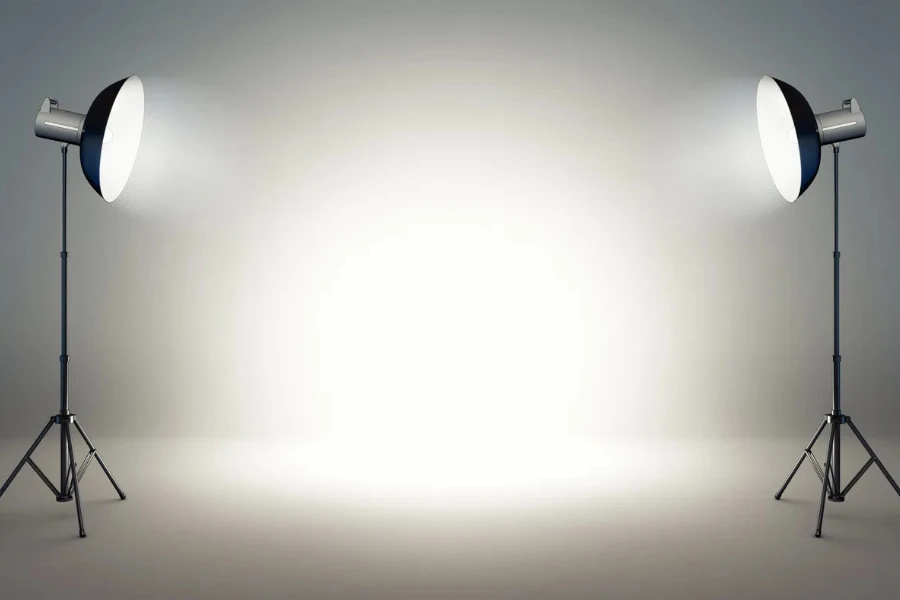
The global photo studio lamp market is experiencing notable growth, driven by the rising demand for high-quality lighting in photography and videography. As of 2023, the market size for LED lights for cameras was estimated at USD 792.95 million and is projected to reach USD 866.62 million in 2024. With a compound annual growth rate (CAGR) of 9.42%, the market is expected to reach USD 1.48 billion by 2030. This growth is fueled by the surge in content creation, including amateur photography and professional video production.
The increasing adoption of LED technology is a major factor driving the market. LED lamps are favored for their energy efficiency, longevity, and superior lighting quality. These lamps consume significantly less energy compared to traditional incandescent and fluorescent lamps, resulting in reduced carbon emissions. Additionally, the growing popularity of smart lighting solutions, which offer remote control and automation features, is expanding the market.
Geographically, North America and Asia-Pacific are the leading regions in the photo studio lamp market. North America’s dominance is attributed to the robust entertainment industry and the high demand for professional-grade lighting solutions among content creators. In Asia-Pacific, rapid economic growth and thriving film industries in countries like India and China are key drivers of market growth. The region’s market dynamics are heavily influenced by the increasing demand for high-quality video production and the adoption of advanced lighting solutions.
Detailed Analysis of the Photo Studio Lamp Market
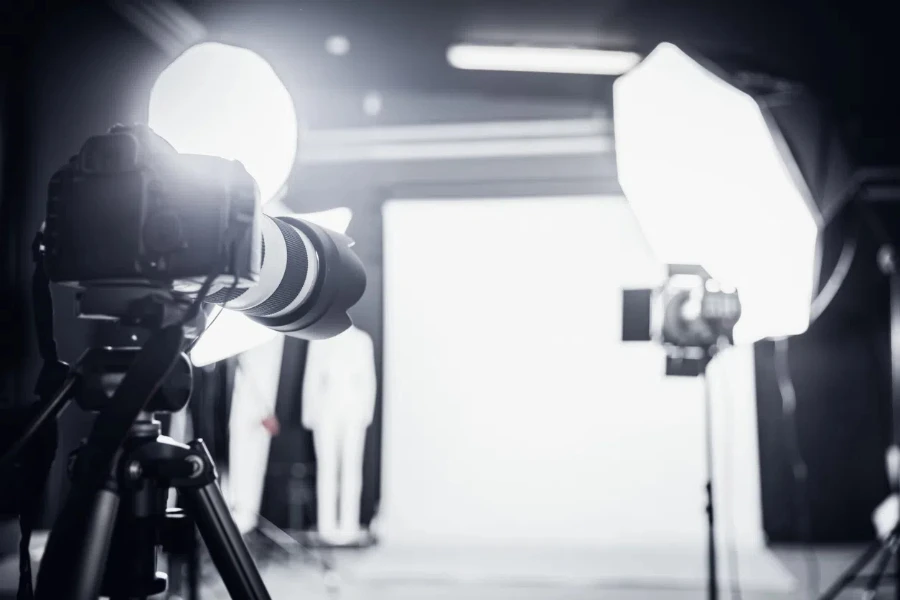
Key Performance Benchmarks
In the competitive landscape of photo studio lamps, key performance benchmarks include energy efficiency, lighting quality, and technological advancements. LED lamps lead the market due to their exceptional energy efficiency, consuming up to 85% less energy than traditional incandescent bulbs. Additionally, LEDs offer superior color rendition and adjustable brightness levels, crucial for professional photography and videography.
Market Share Dynamics
The market is characterized by a mix of established players and new entrants, leading to intense competition and price wars. Major companies like Signify N.V., General Electric, and Osram Licht AG dominate the market, leveraging their extensive distribution networks and strong brand recognition. However, the market is also witnessing the rise of innovative startups offering niche products, such as color-changing LED lamps and smart lighting solutions.
Economic Influences
Economic factors such as urbanization, infrastructure development, and rising disposable incomes positively impact the photo studio lamp market. The expansion of urban areas and the construction of new buildings are increasing the demand for both residential and commercial lighting solutions. Additionally, government regulations promoting energy-efficient lighting are further driving the adoption of LED lamps.
Consumer Behavior Shifts
Consumer preferences are shifting towards customizable and aesthetically pleasing lighting solutions. The demand for lamps that blend seamlessly with interior decor is rising, with many consumers opting for lamps that offer personalization options such as color, shape, and size. This trend is particularly evident in the residential lighting segment, where homeowners seek lamps that enhance the visual appeal of their living spaces.
Seasonal Demand Patterns
The demand for photo studio lamps experiences seasonal fluctuations, with peak periods typically occurring during major holidays and festive seasons. During these times, the demand for professional photography services increases, driving the need for high-quality lighting solutions. Additionally, the rise of social media influencers and content creators has led to consistent demand for portable and versatile lighting solutions throughout the year.
Distribution Channel Preferences
Online sales channels are gaining prominence in the photo studio lamp market, providing consumers with a convenient shopping experience and a wide range of product options. E-commerce platforms like Amazon and specialized lighting stores are key distribution channels. Additionally, hypermarkets and specialty stores continue to play a significant role, offering consumers the opportunity to physically inspect products before purchase.
Recent Innovations
Recent innovations in the market include the development of smart lamps with features such as remote control, color customization, and integration with home automation systems. These smart lamps are gaining traction among tech-savvy consumers seeking convenience and energy savings. Furthermore, the introduction of health-conscious lighting solutions, such as circadian lighting that mimics natural daylight, is enhancing the appeal of photo studio lamps.
Product Lifecycle Stages
Photo studio lamps typically go through several stages in their product lifecycle, from introduction and growth to maturity and decline. The current market is in the growth stage, characterized by rapid technological advancements and increasing consumer adoption. Manufacturers are continually innovating to meet evolving consumer needs, extending the product lifecycle and maintaining market relevance.
Digitalization and Social Trends
The digitalization of the photography and videography industries is driving the demand for advanced lighting solutions. Social media platforms like Instagram and YouTube have created a surge in content creation, with influencers and amateur photographers seeking professional-grade lighting to enhance their content. This trend is expected to continue, further boosting the market for photo studio lamps.
Environmental Regulations
Environmental regulations promoting energy efficiency and sustainability are significantly impacting the market. Governments worldwide are implementing policies to phase out traditional incandescent and fluorescent lamps in favor of energy-efficient LED solutions. These regulations are driving manufacturers to focus on sustainable production practices and develop eco-friendly lighting solutions.
Customer Pain Points
Key customer pain points in the photo studio lamp market include high initial costs and concerns about technological obsolescence. While LED lamps offer long-term cost savings, their higher upfront cost can be a barrier for some consumers. Additionally, the rapid pace of technological advancements can lead to concerns about products becoming outdated quickly.
Brand Positioning and Differentiation Strategies
To differentiate themselves in a competitive market, manufacturers are focusing on innovation, design, and quality. Brands are positioning themselves as providers of high-quality, energy-efficient, and aesthetically pleasing lighting solutions. Customization options, smart features, and sustainable practices are key differentiators that resonate with environmentally conscious and tech-savvy consumers.
Niche Markets
Niche markets within the photo studio lamp industry include specialized lighting solutions for art galleries, museums, and underwater photography. These niche segments require specific lighting characteristics, such as precise color rendition and durability, creating opportunities for manufacturers to cater to specialized needs.
In conclusion, the photo studio lamp market is poised for substantial growth, driven by technological advancements, evolving consumer preferences, and increasing demand for high-quality lighting solutions. As manufacturers continue to innovate and adapt to market dynamics, the industry is expected to witness further expansion and diversification in the coming years.
Key Factors When Selecting Photo Studio Lamps For Creativity
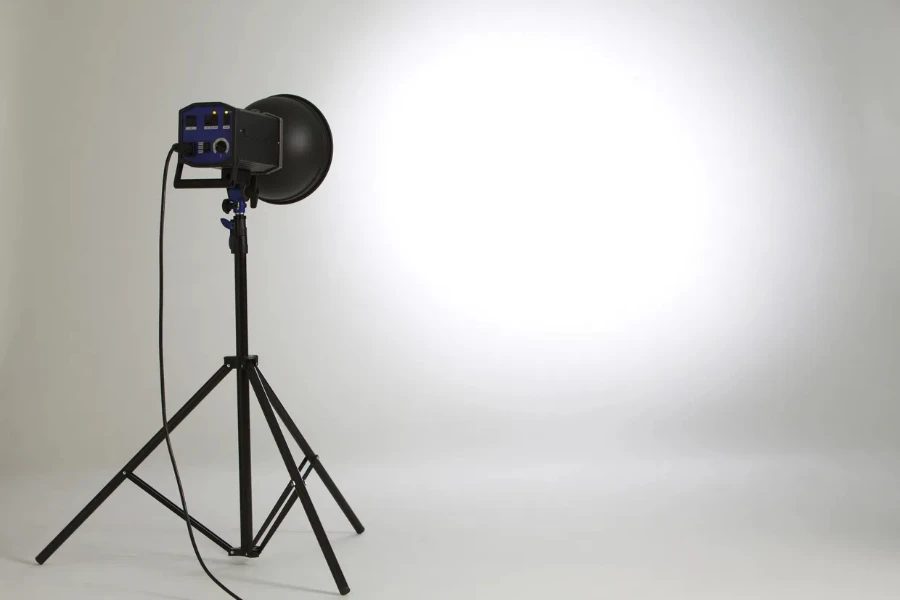
When selecting photo studio lamps for creativity, several factors must be considered to ensure optimal performance and versatility. These include the type of lamp, light quality, power output, ease of use, and additional features. Each aspect plays a crucial role in enhancing creative possibilities and overall user experience.
Types of Lamps
Various types of photo studio lamps are available, each with unique advantages and applications. The most common types include continuous lighting, strobe lighting, and LED panels.
Continuous Lighting
Continuous lighting provides a constant light source, making it easier to see how light and shadows fall on the subject. This type is ideal for both photography and videography.
Advantages: Real-time adjustments and less intimidating for beginners.
Disadvantages: Generates significant heat and consumes more power.
Applications: Product photography, portraits, and video shoots requiring consistent lighting.
Strobe Lighting
Strobe lights, or flash lighting, deliver a burst of light that can freeze motion and provide high-intensity illumination.
Advantages: Powerful and can overpower ambient light, suitable for dynamic and high-speed photography.
Disadvantages: Requires more expertise and additional equipment like triggers and reflectors.
Applications: Fashion photography, action shots, and scenarios needing precise light control.
LED Panels
LED panels are increasingly popular due to their energy efficiency and low heat output.
Advantages: Lightweight, portable, adjustable color temperatures, durable, and consume less power.
Disadvantages: Higher upfront cost.
Applications: On-location shoots, interviews, and situations where mobility and battery power are beneficial.
Light Quality
The quality of light produced by studio lamps significantly impacts the final image. Factors such as color temperature, CRI (Color Rendering Index), and diffusion play a critical role.
Color Temperature
Measured in Kelvin (K), color temperature determines the warmth or coolness of the light.
Daylight (5000-6500K): Mimics natural daylight, ideal for general photography.
Tungsten (3200K): Produces a warmer light, suitable for cozy and intimate settings.
Adjustable Temperature: Some lamps allow users to adjust the color temperature for different scenarios.
CRI (Color Rendering Index)
CRI measures the lamp’s ability to reproduce colors accurately.
High CRI (90+): Provides natural and vibrant colors, essential for product photography and portraits.
Moderate CRI (80-89): Suitable for general use but may not deliver the same color accuracy.
Diffusion
Diffusers soften the light and reduce harsh shadows.
Softboxes: Spread light over a larger area, creating soft, even illumination.
Umbrellas: Reflective umbrellas bounce light back onto the subject for a softer look.
Diffusion Panels: Scatter light more evenly when used in front of the light source.
Power Output
The power output of studio lamps is crucial for achieving desired lighting effects.
Wattage
Higher wattage lamps produce more light but also generate more heat.
High Wattage (500W+): Suitable for large studios and intense light requirements.
Low to Medium Wattage (100-500W): Ideal for smaller studios and less demanding lighting conditions.
Lumen Output
Lumens measure the total amount of visible light emitted by a source.
High Lumen Output: Necessary for bright and well-lit scenes.
Adjustable Output: Some lamps offer adjustable brightness levels for flexibility in different shooting conditions.
Ease of Use
User-friendly features can significantly enhance the experience of using studio lamps.
Setup and Portability
Quick Setup: Easy assembly and disassembly save time and effort during shoots.
Portability: Lightweight and compact designs benefit photographers who frequently shoot on location.
Controls
Remote Control: Allows adjustments without physically touching the lamp, ideal for fine-tuning during a shoot.
Digital Displays: Provide precise control over brightness and color temperature settings.
Additional Features
Modern studio lamps come with various additional features that enhance functionality.
Wireless Connectivity
Bluetooth/Wi-Fi: Enables remote control via smartphone apps, offering convenience and advanced control options.
Battery Operation
Built-in Batteries: Useful for outdoor shoots where power outlets are unavailable.
Battery Packs: Extend the operational time of the lamps.
Special Effects
Built-in Effects: Some lamps come with pre-programmed lighting effects like flicker, lightning, and pulse, adding creative possibilities to shoots.
Advanced Features in Modern Photo Studio Lamps
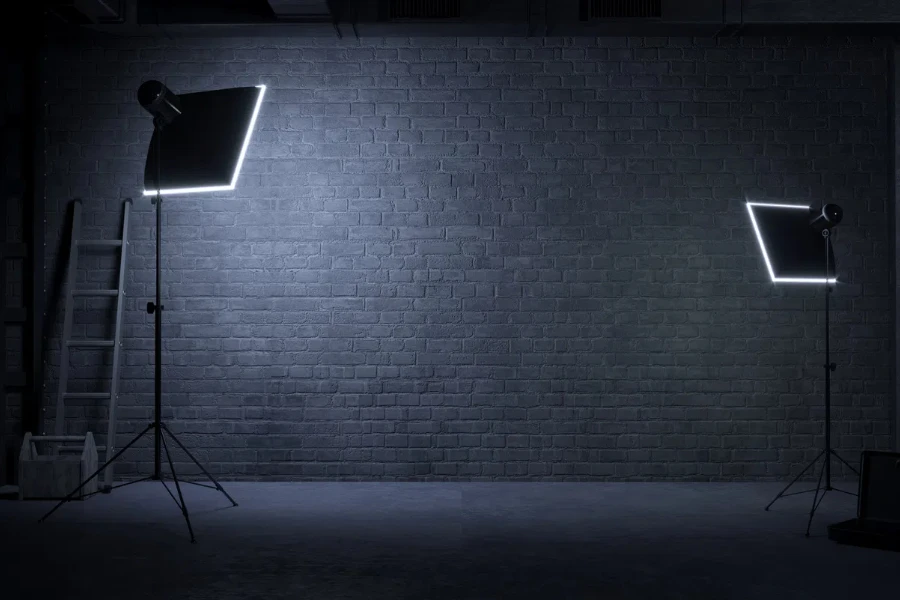
The evolution of photo studio lamps has led to the integration of advanced features catering to modern photographers and videographers.
Smart Lighting Technology
Smart lighting technology has transformed how photographers control and manipulate light.
Integration with Smart Devices
Many modern studio lamps can be controlled via smartphones, tablets, or computers.
Bluetooth and Wi-Fi Connectivity: Allows seamless control over multiple lamps from a single device.
App Integration: Dedicated apps provide intuitive interfaces for adjusting brightness, color temperature, and special effects.
Voice Control
Integration with voice assistants like Amazon Alexa and Google Assistant offers hands-free operation.
Voice Commands: Enables photographers to adjust lighting settings without interrupting their workflow.
Energy Efficiency
Energy efficiency is crucial for both environmental and practical reasons.
LED Technology
LED lamps are known for their energy efficiency and long lifespan.
Low Power Consumption: LEDs consume significantly less power compared to traditional incandescent or fluorescent lamps.
Long Lifespan: LEDs can last for tens of thousands of hours, reducing the need for frequent replacements.
Solar-Powered Options
Some modern lamps offer solar charging capabilities.
Eco-Friendly: Solar-powered lamps reduce reliance on traditional power sources and are ideal for outdoor shoots.
Customizable Lighting Effects
Advanced photo studio lamps come with a range of customizable lighting effects that enhance creative possibilities.
Built-in Effects
Pre-programmed effects can be activated directly from the lamp or via a connected device.
Common Effects: Include strobe, lightning, candlelight, and more.
Adjustable Parameters: Users can customize the intensity, speed, and duration of the effects.
Modular Add-Ons
Modular systems allow photographers to add or swap components based on their needs.
Interchangeable Parts: Such as different types of diffusers, gels, and modifiers.
Expansion Kits: Enhance the lamp’s capabilities, like adding battery packs or remote triggers.
Safety Standards and Certifications
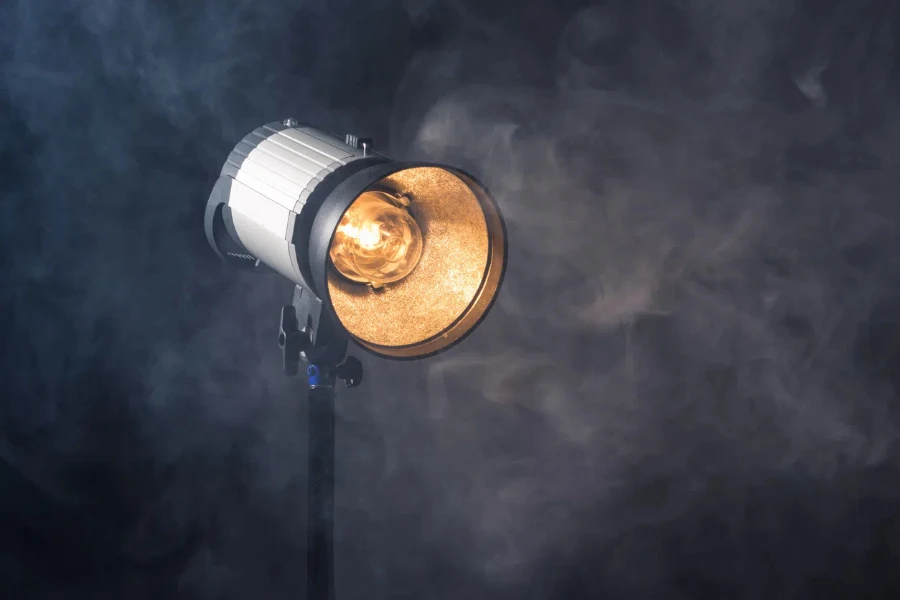
Safety is paramount when using photo studio lamps, as they involve electrical components and can generate heat.
Regulatory Compliance
Lamps should comply with international safety standards to ensure user safety.
CE Marking
Indicates conformity with health, safety, and environmental protection standards for products sold within the European Economic Area (EEA).
UL Certification
Underwriters Laboratories (UL) certification ensures that the product meets rigorous safety standards in the United States.
Build Quality and Materials
The build quality and materials used in constructing studio lamps affect their durability and safety.
Heat-Resistant Materials
Lamps should be made from materials that can withstand high temperatures.
Metal Housings: More durable and heat-resistant compared to plastic.
Ventilation Systems: Proper ventilation prevents overheating and prolongs the lamp’s lifespan.
Shock Resistance
Lamps should be designed to withstand accidental drops and impacts.
Reinforced Frames: Provide additional protection against physical damage.
Stable Bases: Prevent tipping over, reducing the risk of accidents.
Electrical Safety Features
Electrical safety features protect users from potential hazards.
Overload Protection
Prevents damage to the lamp and reduces the risk of electrical fires.
Automatic Shut-Off: Lamps with built-in sensors shut off in case of overload or overheating.
Fuses and Circuit Breakers: Provide an additional layer of protection.
Insulated Wiring
Ensures safe operation and reduces the risk of electrical shocks.
Double Insulation: Offers extra protection by isolating conductive parts.
Quality Connectors: High-quality connectors and switches enhance safety and reliability.
Practical Examples of Advanced Photo Studio Lamps
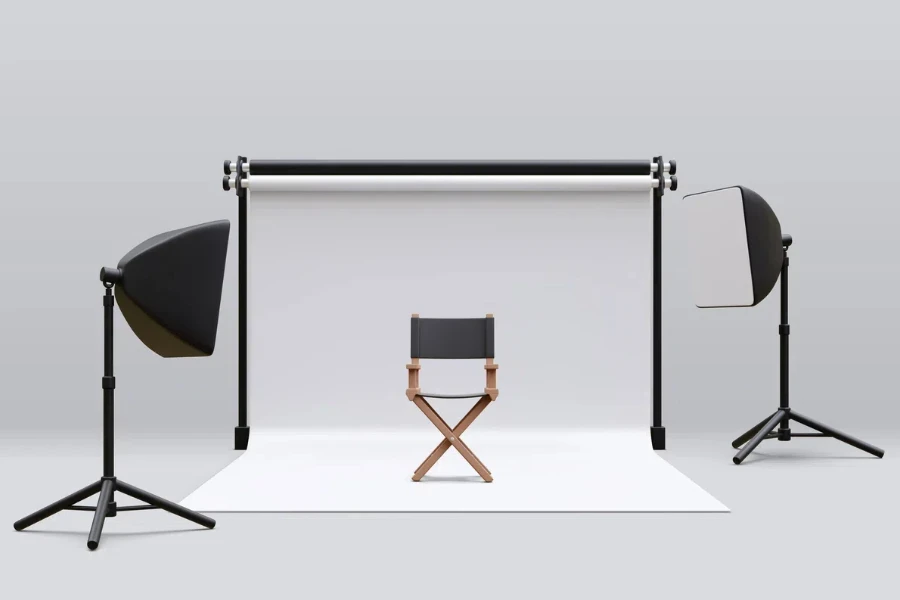
Understanding the practical applications of advanced photo studio lamps can help make informed purchasing decisions.
Godox SL-60W
The Godox SL-60W is popular among photographers and videographers for its versatility and affordability.
LED Technology: Provides consistent and flicker-free lighting.
Adjustable Brightness: Allows for precise control over light intensity.
Remote Control: Offers convenience in adjusting settings without touching the lamp.
Aputure Light Storm LS C120D II
The Aputure Light Storm LS C120D II is known for its high-quality build and professional-grade features.
High CRI and TLCI: Ensures accurate color reproduction.
Bowens Mount: Compatible with a wide range of modifiers and accessories.
Wireless Control: Can be controlled remotely using the Aputure app.
Neewer 2-Pack Dimmable Bi-Color 660 LED
The Neewer 2-Pack Dimmable Bi-Color 660 LED kit is ideal for photographers needing a portable, flexible lighting solution.
Bi-Color Temperature: Adjustable from 3200K to 5600K.
Dimmable Brightness: Provides flexibility in different lighting scenarios.
Battery Powered: Offers portability for on-location shoots.
Importance of Customer Support and Warranty
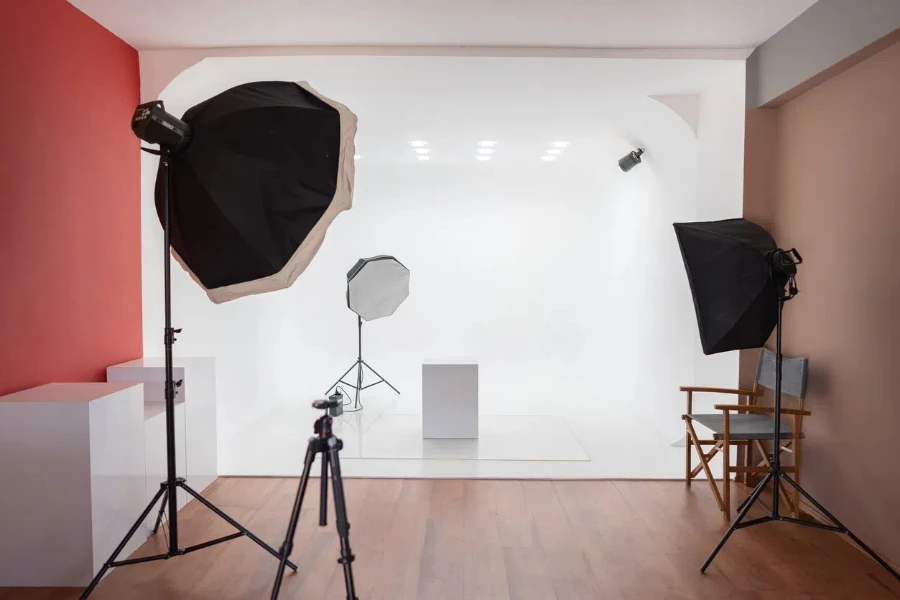
When investing in photo studio lamps, the availability of customer support and warranty services is crucial.
Customer Support
Reliable customer support ensures users can get assistance when needed.
Technical Assistance: Helps in troubleshooting issues and understanding product features.
Responsive Service: Quick responses enhance user satisfaction and confidence in the product.
Warranty
A comprehensive warranty protects the investment and provides peace of mind.
Coverage: Should include parts and labor for a specified period.
Extended Warranty: Some manufacturers offer extended warranties for an additional fee, providing longer protection.
Return and Refund Policy
A clear return and refund policy ensures customers can return the product if it does not meet their expectations.
Return Window: The time frame within which the product can be returned.Refund Process: Should be straightforward and transparent, ensuring customers can get their
Summing It Up
Selecting the right photo studio lamp involves considering various factors, including the type of lamp, light quality, power output, ease of use, advanced features, safety standards, and customer support. Understanding these aspects helps make informed decisions that enhance creativity and ensure a safe and enjoyable user experience.





 বাংলা
বাংলা Nederlands
Nederlands English
English Français
Français Deutsch
Deutsch हिन्दी
हिन्दी Bahasa Indonesia
Bahasa Indonesia Italiano
Italiano 日本語
日本語 한국어
한국어 Bahasa Melayu
Bahasa Melayu മലയാളം
മലയാളം پښتو
پښتو فارسی
فارسی Polski
Polski Português
Português Русский
Русский Español
Español Kiswahili
Kiswahili ไทย
ไทย Türkçe
Türkçe اردو
اردو Tiếng Việt
Tiếng Việt isiXhosa
isiXhosa Zulu
Zulu